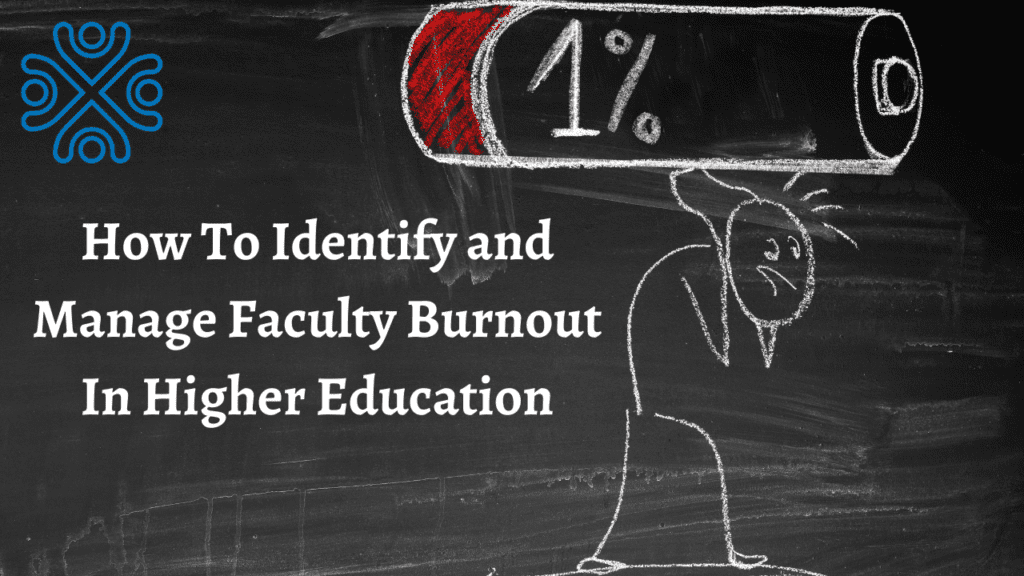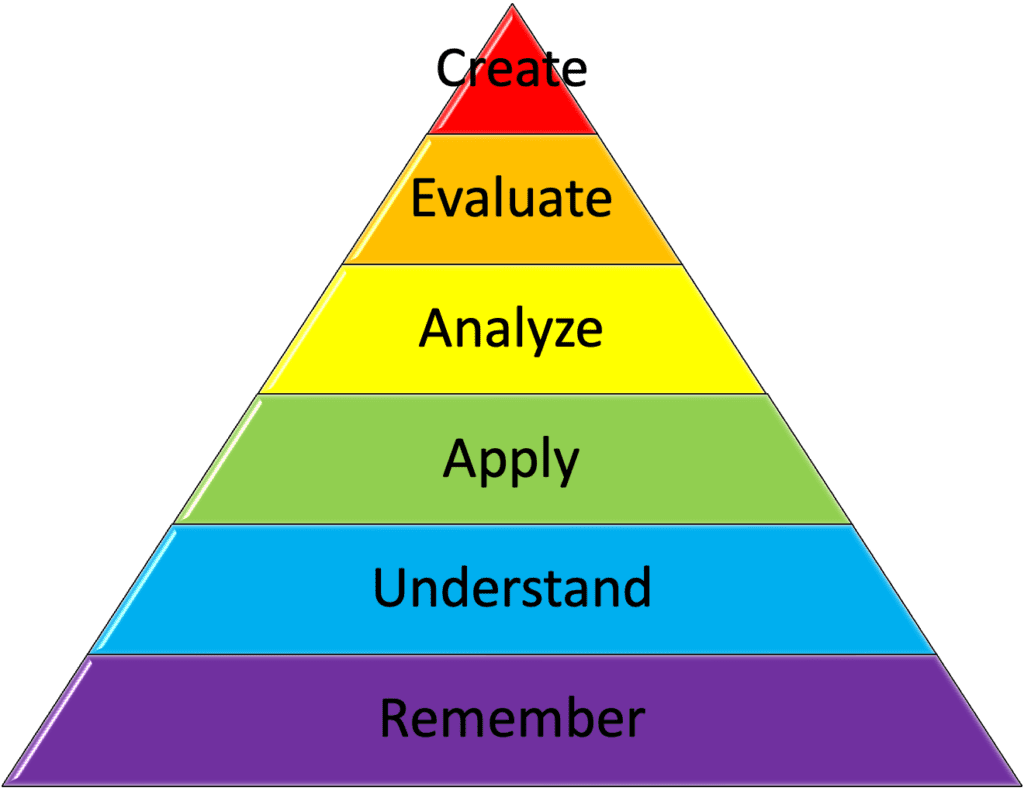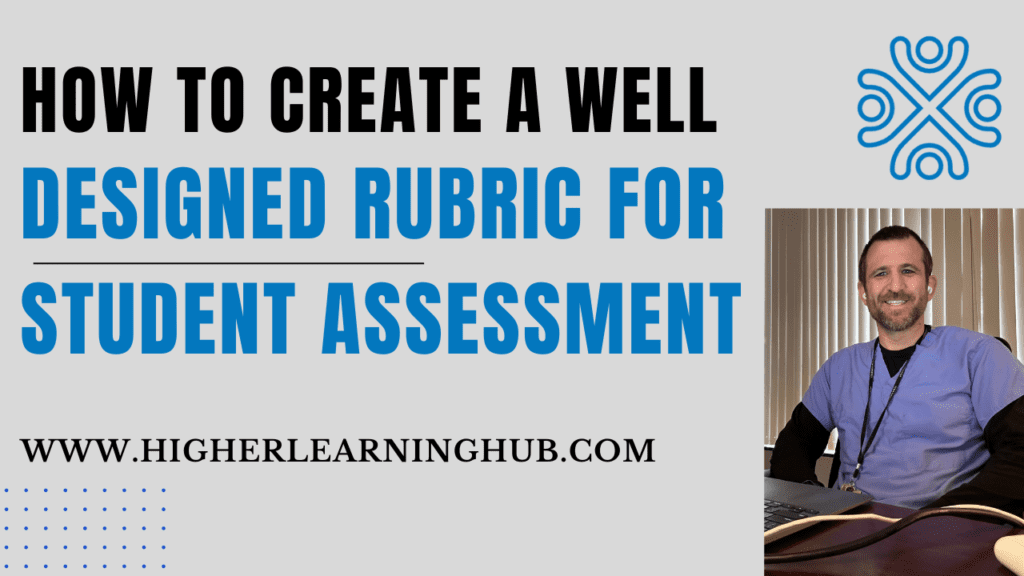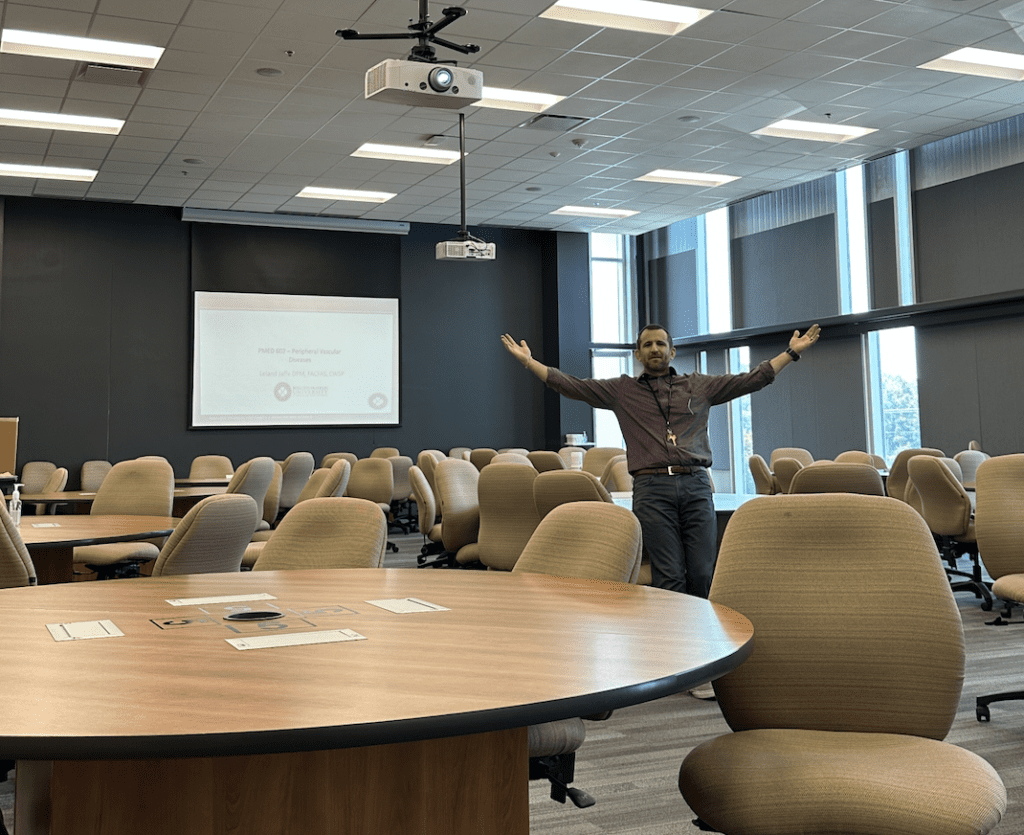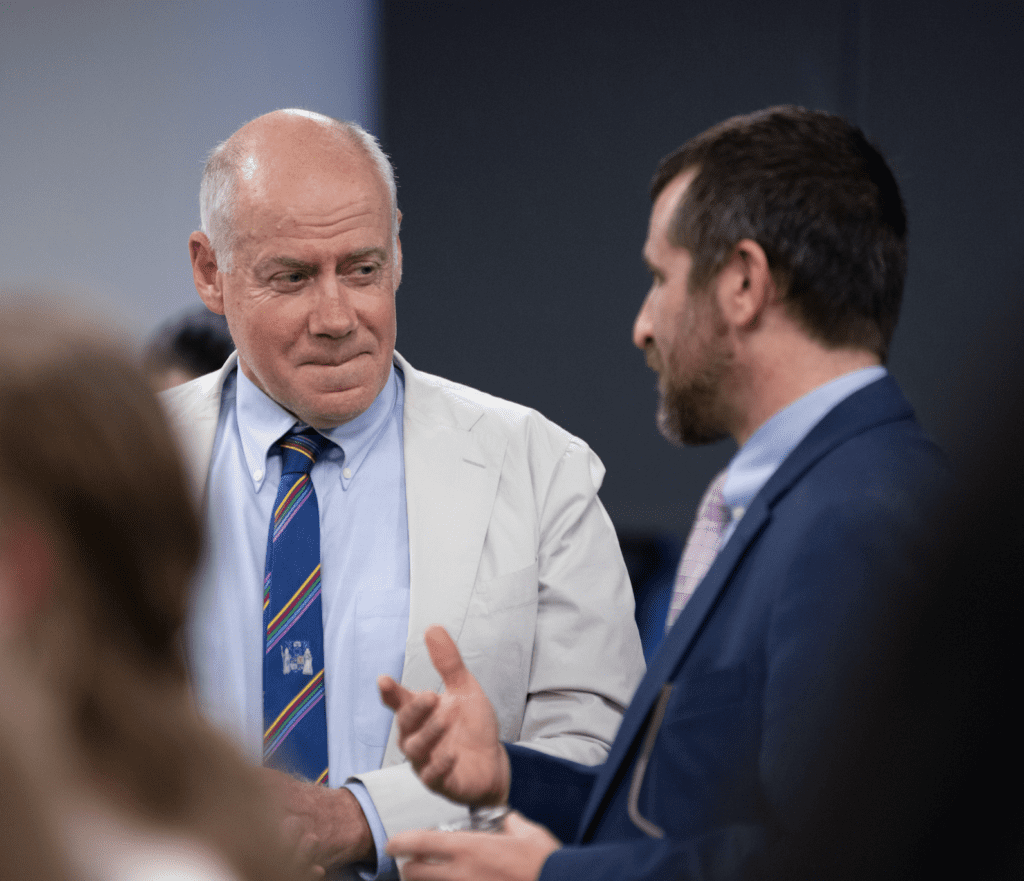Authored by Dr. Leland Jaffe; Associate Dean and Professor; Published on March 4th, 2024
As a faculty member in higher education, I’ve witnessed firsthand the toll that burnout can take on faculty members. It’s often overlooked amidst the hustle and bustle of academia and our professional lives.
Yet, managing faculty burnout is crucial for fostering a healthy and productive learning environment. In this blog post, I want to share my journey and insights into addressing this pressing issue.
Before we start, let’s define what “burnout” is according to the World Health Organization (WHO).
Burnout is included in the 11th Revision of the International Classification of Diseases (ICD-11) as an occupational phenomenon, it is not classified as a medical condition.
Burnout is defined in ICD-11 as follows:
“Burn-out is a syndrome conceptualized as resulting from chronic workplace stress that has not been successfully managed. It is characterized by three dimensions:
- feelings of energy depletion or physical exhaustion;
- increased mental distance from one’s job, feelings of negativism or cynicism related to one’s job; and
- reduced professional efficacy.
When I first stepped into my role, I was eager to make a positive impact and support the academic community. However, it didn’t take long for me to realize that burnout was a pervasive problem affecting both seasoned professors and newer educators. The symptoms of burnout were there: chronic stress, lack of motivation, cynicism, decreased job satisfaction, and diminished performance.
The first step in managing faculty burnout was acknowledging its existence and destigmatizing discussions around mental health and faculty well-being.
One of the most effective strategies that needs to be implemented is workload management. It’s important to recognize that faculty members are often overwhelmed by competing demands, from teaching and research to administrative tasks and committee work. Through collaborative efforts, we need to reassess workload distribution, streamline processes, and provide additional resources where needed; essentially work smarter and not harder. By alleviating some of the burdens, we will empower faculty members to focus on what truly matters: their passion for teaching and student mentorship.
The Important Skill of Saying “No” To Reduce Faculty Burnout
Recognizing the importance of saying “no” is essential in effectively managing one’s workload and maintaining overall well-being. While the impulse to accommodate every request or take on additional responsibilities may stem from a desire to excel or be seen as reliable, it can ultimately lead to overwhelm, exhaustion, and burnout- this is a skill that took me years to develop.
Learning to set boundaries and decline tasks that exceed one’s capacity is not a sign of weakness but rather a demonstration of self-awareness and self-care. By prioritizing commitments and saying “no” to non-essential or overly burdensome tasks, individuals can better allocate their time and energy to activities that align with their goals and values. This practice not only fosters greater productivity and efficiency but also preserves mental and emotional resources, enabling individuals to sustainably pursue their professional and personal endeavors.
Work-life Balance
Another great way of managing burnout is promoting work-life balance. Too often, academia and our professional lives glorify the notion of sacrificing personal well-being for the pursuit of knowledge. However, I firmly believe that a healthy work-life balance is essential for long-term success and fulfillment, and this concept has continued to come into focus as I progress through my career. We need to encourage faculty members to prioritize self-care, set boundaries, and pursue interests outside of academia. Whether it is through flexible scheduling, wellness programs, or mindfulness workshops, we need to promote self-care among the university faculty.
Additionally, professional development and mentorship can go a long way in combating burnout. By offering opportunities for skill-building, mentorship, and career advancement, faculty members are empowered to grow and thrive in their roles. By investing in their professional growth, we’ll demonstrate a commitment to their success and contribute to a sense of fulfillment and purpose.
Wellness Programs in Higher Education – Are They Effective?
In response to the pressing issue of faculty burnout in higher education, implementing comprehensive wellness programs has emerged as a crucial strategy to promote faculty well-being and mitigate stress levels. These programs encompass a range of initiatives tailored to address the unique stressors and challenges faced by medical educators. From mindfulness and stress management workshops to physical fitness activities and counseling services, wellness programs offer faculty members the tools and resources they need to prioritize self-care and maintain a healthy work-life balance. By fostering a culture that values and supports the well-being of its faculty, medical schools can cultivate a more resilient and engaged academic community, ultimately enhancing the quality of education and patient care.
Mastering Time Management Skills Is Critical To Reduce Feelings of Faculty Burnout
Poor time management skills can significantly contribute to faculty burnout by creating a perpetual cycle of stress and overwhelm. When educators struggle to effectively prioritize tasks, allocate sufficient time for various responsibilities, and maintain boundaries between work and personal life, they often find themselves inundated with work, leading to feelings of being constantly behind and overwhelmed. This last point has been magnified by the pandemic, where remote meetings have become the norm and your work can easily infiltrate into your personal time. This chronic sense of pressure can erode morale, increase anxiety, and diminish job satisfaction.
Moreover, it can hinder the ability to focus on teaching and research, impacting the quality of work and exacerbating feelings of inadequacy. As the demands of academia continue to mount, those without strong time management skills may find themselves trapped in a relentless cycle of exhaustion and burnout, ultimately compromising their overall well-being and professional effectiveness.
Of course, managing faculty burnout is an ongoing journey, not a destination. We continue to monitor the well-being of our academic community, adapt our strategies as needed, and advocate for systemic changes within higher education. It’s a collective effort that requires dedication, empathy, and collaboration from all stakeholders.
What are some of the most common faculty burnout symptoms that we should be aware of?
- Decreased Job Satisfaction: Loss of enthusiasm or passion for teaching, research, or academic duties.
- Chronic Exhaustion: Persistent feelings of fatigue, even after resting or taking time off.
- Increased Irritability: Heightened levels of irritability, impatience, or frustration, especially in response to minor setbacks or challenges.
- Emotional Detachment: Feeling emotionally distant or disconnected from students, colleagues, or academic responsibilities.
- Cynicism and Negativity: Adopting a pessimistic or cynical outlook towards work-related tasks, colleagues, or the academic environment.
- Decreased Performance: Decline in the quality of teaching, research output, or overall job performance.
- Physical Symptoms: Experience of physical symptoms such as headaches, muscle tension, gastrointestinal issues, or frequent illnesses.
- Isolation: Withdrawal from social interactions with colleagues or students, reluctance to participate in academic or extracurricular activities.
- Lack of sleep: Difficulty falling asleep, staying asleep, or experiencing restorative sleep patterns.
- Increased Absenteeism: Frequent absences from work due to illness, personal days, or other reasons unrelated to scheduled breaks.
- Neglect of Social Life and Self-Care: Disregard for personal health habits such as exercise, nutrition, or relaxation activities.
- Procrastination: Difficulty initiating or completing tasks, leading to increased stress and workload.
- Feelings of Inadequacy: Persistent feelings of self-doubt, imposter syndrome, or a sense of being overwhelmed by job responsibilities.
- Escapist Behaviors: Engaging in escapist behaviors such as excessive alcohol consumption, substance abuse, or compulsive behaviors to cope with stress.
- Decline in Interpersonal Relationships: Strained relationships with colleagues, friends, or family members due to increased stress or irritability.
- Loss of Enthusiasm: Absence of excitement or interest in professional development opportunities, conferences, or new academic initiatives.
- Difficulty Concentrating: Trouble focusing on tasks, making decisions, or retaining information due to mental fatigue or overwhelm.
- Increased Work Hours: Spending excessive hours at work, including evenings, weekends, or holidays, to keep up with job demands.
Recognizing these warning signs of burnout and taking proactive steps to address them can help mitigate the risk of burnout and promote overall well-being in academic settings.
Let’s review my top 15 ways that educators can foster a good work-life balance and minimize faculty burnout.
- Establish Clear Boundaries: Set defined work hours and make a conscious effort to disconnect from work-related tasks during personal time.
- Prioritize Self-Care: Incorporate regular exercise, adequate sleep, healthy eating habits, and relaxation techniques into your routine to maintain physical and mental well-being.
- Delegate Tasks: Identify tasks that can be delegated to colleagues, assistants, or students to lighten your workload and reduce stress.
- Practice Time Management: Use tools like calendars, to-do lists, and scheduling apps to organize tasks efficiently and allocate time effectively.
- Seek Support: Engage with colleagues, mentors, or counselors to discuss challenges, share experiences, and gain perspective on managing workload and stress.
- Set Realistic Goals: Break down large tasks into smaller, manageable goals, and celebrate achievements along the way to maintain motivation and reduce feelings of overwhelm.
- Embrace Work-Life Balance: Make time for hobbies, interests, and activities outside of work to recharge and prevent burnout.
- Professional Development: Pursue opportunities for continuing education, skill development, and career advancement to stay engaged and motivated in your field.
- Regular Breaks: Incorporate short breaks throughout the day to rest, recharge, and prevent mental fatigue.
- Feedback and Reflection: Solicit feedback from students, peers, or supervisors to assess your teaching and research practices, and reflect on areas for improvement to enhance job satisfaction and effectiveness.
- Manage Expectations: Communicate with supervisors, students, and colleagues about realistic expectations regarding workload, deadlines, and responsibilities.
- Engage in Meaningful Work: Identify aspects of your role that bring fulfillment and focus on activities that align with your values and professional goals.
- Stay Organized: Maintain a clutter-free workspace and develop systems for filing documents, emails, and materials to minimize stress and improve productivity.
- Practice Mindfulness: Incorporate mindfulness techniques such as meditation, deep breathing, or mindfulness walks to reduce stress and promote a sense of calm and clarity.
- Take Vacations: Plan regular breaks from work, whether it’s a long vacation or short weekend getaway, to relax, rejuvenate, and prevent burnout. According to an article published in Bloomberglaw.com, only 48% of Americans take their vacation during any given year, and the most common reasons were that they didn’t feel they needed to or they were concerned about falling behind on their work. This is a point that I need to improve upon, as I don’t think I’ve taken my full vacation time in the 9+ years of working in higher education.
What are some of the symptoms of student burnout that we should be aware of?
The symptoms of academic burnout can manifest differently between students and faculty due to the distinct pressures and responsibilities students face within academic environments. For students, burnout often presents as chronic exhaustion, feelings of cynicism or detachment towards coursework, and a generally negative attitude toward their studies. They may experience heightened stress related to academic stress, student debt, social media pressures, and future prospects, leading to emotional fatigue and difficulty maintaining motivation, especially in higher education institutions.
Conversely, faculty members experiencing burnout may exhibit symptoms such as emotional exhaustion from juggling teaching, research, and administrative duties, coupled with a sense of depersonalization towards students or colleagues. They may also struggle with feelings of inefficacy in their ability to meet professional demands, leading to decreased productivity and engagement in their roles. While both students and faculty may experience burnout, the specific stressors and expectations inherent to their respective positions can result in varied manifestations of this phenomenon.
What are some of the steps students can take to minimize academic burnout in higher education?
- Prioritize self-care: Allocate time for relaxation, exercise, hobbies, and social activities to recharge.
- Establish boundaries: Set realistic goals and boundaries to avoid overcommitting and spreading oneself too thin.
- Practice time management: Organize tasks, create schedules, and prioritize assignments to reduce stress and maintain a sense of control.
- Seek support: Utilize campus resources such as counseling services, peer support groups, or academic advisors for guidance and assistance.
- Maintain a healthy lifestyle: Eat nutritious meals, get adequate sleep, and avoid excessive caffeine or alcohol consumption.
- Take breaks: Incorporate regular breaks into study sessions to prevent mental fatigue and maintain focus.
- Engage in relaxation techniques: Practice mindfulness, deep breathing exercises, or meditation to alleviate stress and promote mental well-being.
- Foster connections: Build supportive relationships with peers, faculty members, and mentors to cultivate a sense of belonging and community.
- Set boundaries with technology: Limit screen time, especially before bedtime, to promote better sleep quality and reduce digital fatigue.
- Reflect and reassess: Periodically evaluate academic and personal goals, adjusting strategies as needed to maintain balance and prevent burnout.
Let’s Hear From A Faculty Member in Higher Education:
Dr. Erin Klein – When I’m done, I am done. Everything is turned off and it stays that way until the next business day.
If I have to weekend round, I weekend round…..but….for the most part…… I turn work off when I leave the office. I also do not have my work email on my phone.
Now. That sounds CRAZY, right? Not really. It is very European. But. It also allows me to spend time with my kids and provide my undivided attention. Being a mom. Rocking the stickiness that is motherhood. It has taken some adjustment to do this. But it is 100% worth it.
Recognizing and Managing Faculty Burnout – Conclusion
In conclusion, addressing increased faculty burnout levels in higher education is not just a moral imperative; it’s essential for fostering a vibrant and resilient academic community. By prioritizing mental health, workload management, work-life balance, and professional development, we can create a cultural change where faculty members feel supported, valued, and empowered to thrive with lower levels of stress. Implementing some or all of these strategies can make significant differences in reducing feelings of burnout.

